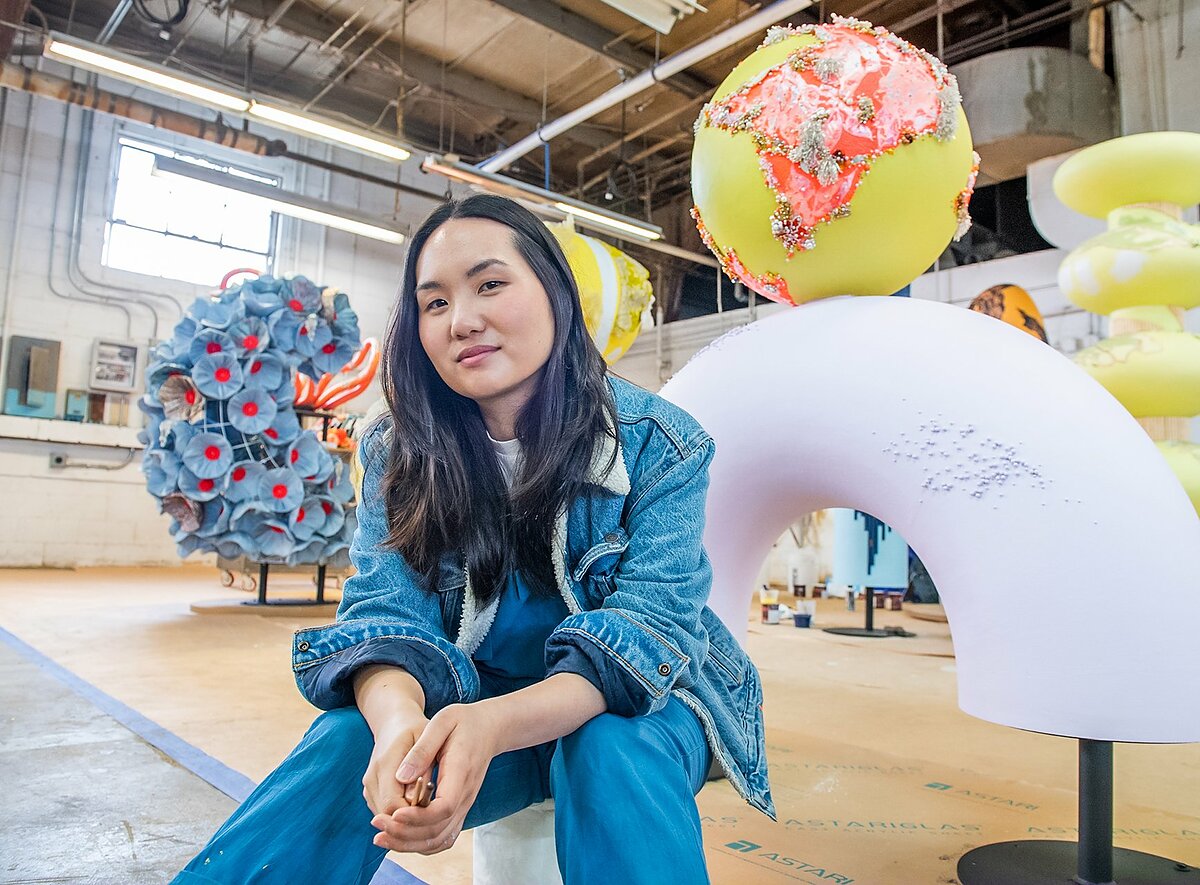Amanda Phingbodhipakkiya’s Public Art Creates Spaces to Heal
Artist Amanda Phingbodhipakkiya is a daughter of Thai and Indonesian immigrants who splits her time between Brooklyn and just about anywhere where there’s an opportunity to create public art that fosters social connection and a sense of belonging. With her background in neuroscience in tow, Phingbodhipakkiya strives to reclaim space and create community monuments through public art.
“Whether you’re getting a bagel or walking your dog, public art is a way to engage with the truth I’m speaking in a way that’s impossible to ignore,” she told me in a recent conversation. For her, public art is a particularly powerful medium because it demands to be seen and allows her art to spark curiosity and action in people of all backgrounds.
Phingbodhipakkiya’s work is often created in service of her communities: women, Asian Americans, New Yorkers, and anyone fighting for justice. With her work, I Still Believe in Our City, Phingbodhipakkiya partnered with the NYC Commission on Human Rights on a series of subway billboard illustrations that speak out loudly against anti-Asian violence and voice solidarity with the Black Lives Matter movement. Her series, WE ARE MORE, celebrates the resilience and range of the Asian American and Pacific Islander community. In May We Know Our Own Strength, Phingbodhipakkiya created a memorial to raise awarness of sexual assault and gender-based violence and highlight the healing power of sharing our stories with others. Her mural series, FINDINGS, highlights the research of women in STEM to inspire a new generation of youth around the country to follow in their footsteps.
“Often my work involves asking for the gift of stories and participation to co-create art with me,” says Phingbodhipakkiya. “I treat these gifts as sacred—these are pieces of our collective history that I have the privilege of bearing witness to. I hope that community members experience both healing and transformation when they engage with me.”
Oftentimes, Phingbodhipakkiya’s work requires her to build trust and a sense of safety with the communities she’s working with. For example, her installation GATHER (2022) brought people together to experience grief, catharsis, and joy in a place of refuge at Lincoln Center. Participants held each other and wept, a reflection of their willingness to let down their guard and share intimate parts of themselves.
The artist shared how during a ritual she ran last summer, a Thai student walked by and said, “I’ve never seen a Thai person take up this much space.” Through experiencing such expansive and vulnerable work, the student felt like her voice would be welcome too.
“I reflect on moments like those when the work gets tough to remind myself why I do what I do,” Phingbodhipakkiya says. “I know my practice can inspire people to embrace their multitudes and remember that their voices are unique and needed.”
“I spent time in the Bay Area at the start of the year meeting with over 100 community members, who shared reflections on their inheritance and their shared futures,” Phingbodhipakkiya says. “I also have some large-scale installation work that I’ll share more details on later this year. In all my upcoming work, I’m looking to uplift and reveal the depth, beauty, and resilience of our communities.”
Phingbodhipakkiya feels especially moved when people use her art to express themselves, whether people add it to their storefront or classroom or carry signs with her art as symbols of pride, solidarity, and allyship. “My soul is lifted when people reach out and share how my work has made them feel seen, given them solace, and infused them with courage—whether in New York, across the country or anywhere around the world.”
Amanda Phingbodhipakkiya will be participating in A4’s upcoming panel, AAPI Artists on Public Art.
Aleenah Ansari is a Seattle-based writer covering travel, entrepreneurship, mental health and wellness, and representation in media for Insider, The Seattle Times, Byrdie, and more. You can usually find her searching for murals in Seattle and beyond, reading a book by a BIPOC author, and planning her next trip to New York. Learn more at www.aleenahansari.com.










